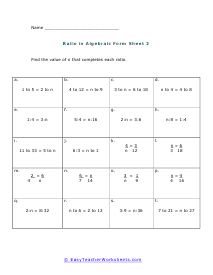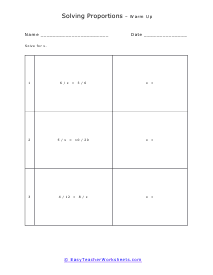A ratio is a comparison of two quantities. A proportion, which is an equation with a ratio on each side, states that two ratios are equal.Many people often interchangeably use the terms 'ratios' and 'proportions.' These two terms are different. Ratios are a way to compare two quantities through division. Proportions on the other hand are form of equations that shows that two ratios are equal. Many students find it difficult to solve proportions. However, solving proportions is not that complex. Let us discuss different methods to solve proportions. The first one that we are going to talk about is the diagonal method, or the cross-product method. if a/b=c/d then ad=bc. The other two methods to solve proportions are vertical and horizontal. When using the vertical method, you need to know whether the numerator and denominator are related to each other through multiplying or dividing by a specific number. When solving horizontally, the numerators of both ratios are related to each other through multiplication or division by a specific number.
In these worksheets, your students will solve proportions algebraically (use cross multiplication method to solve for a variable in order to complete a proportion). They will write ratios in their simplest form. They will also create proportions from a given set of numbers. This set of worksheets contains how-to lessons, step-by-step solutions to sample problems, both simple and more complex problems, and reviews. It also includes ample worksheets that can be used for independent practice. Problems are provided at both the basic skills and the intermediate skills levels. When finished with this set of worksheets, students will be able to recognize, create, and simplify proportions. These worksheets explain how to complete proportions. Sample problems are solved and practice problems are provided.


















